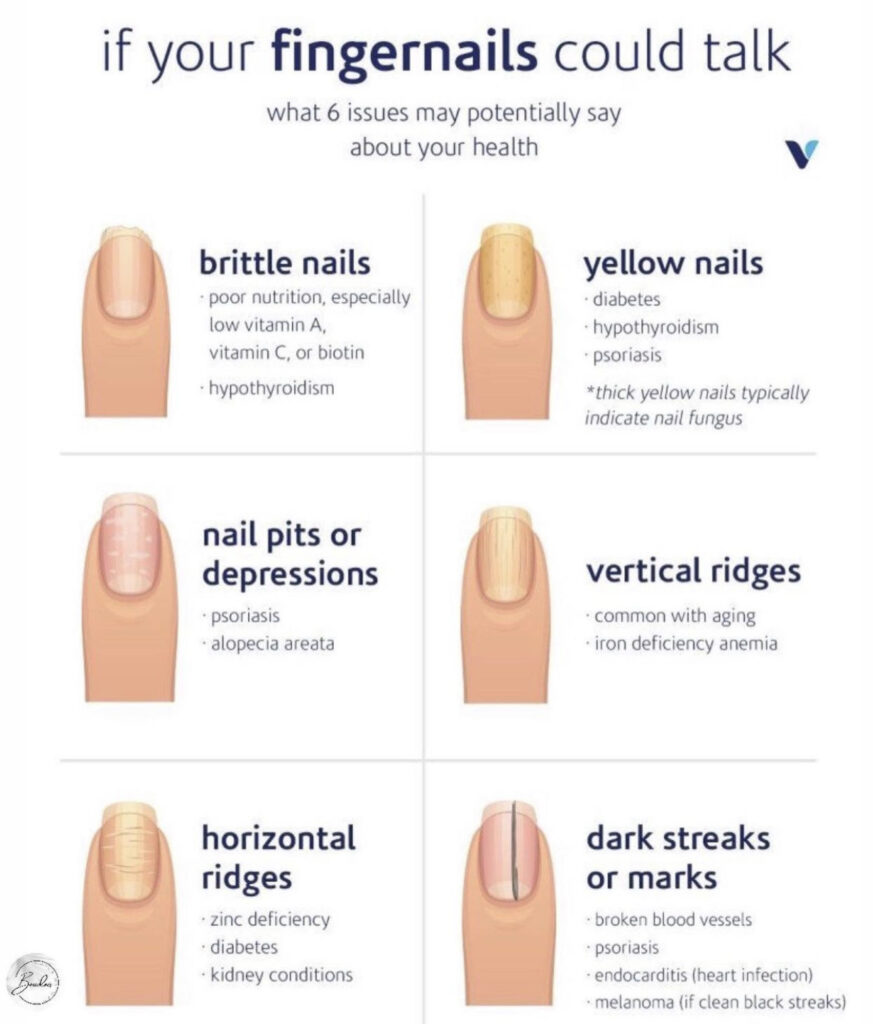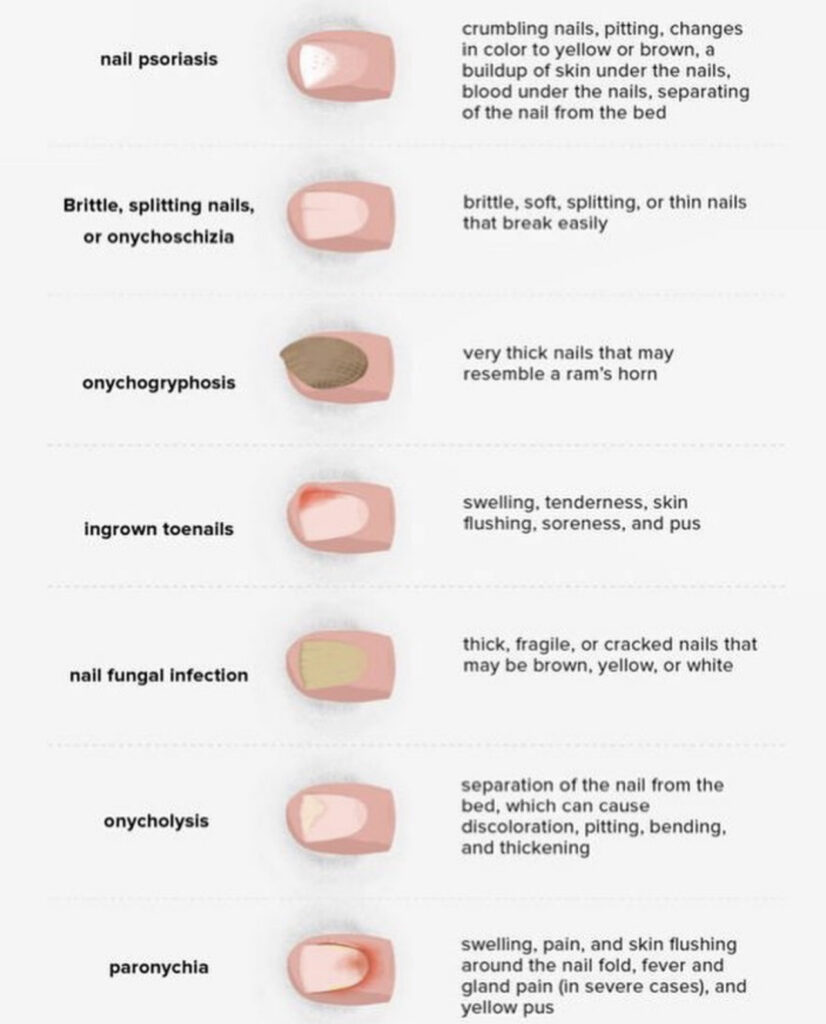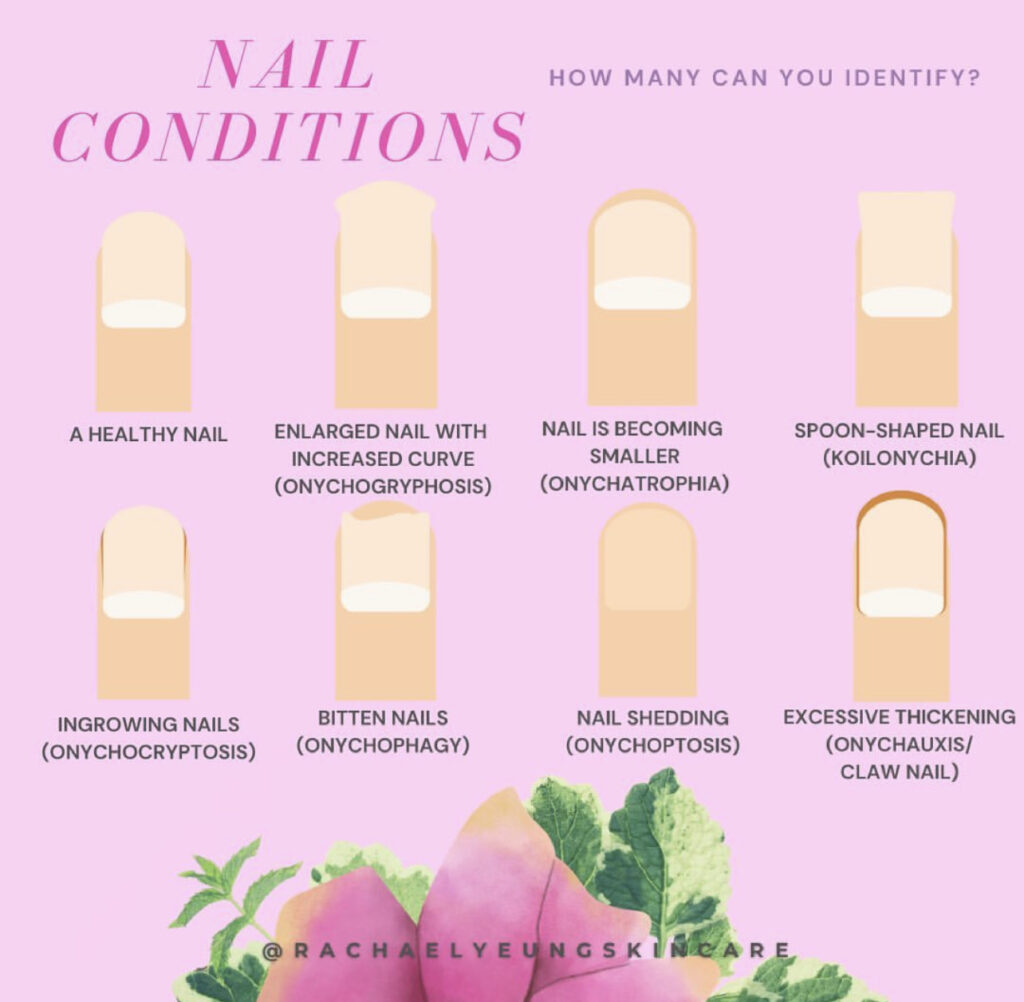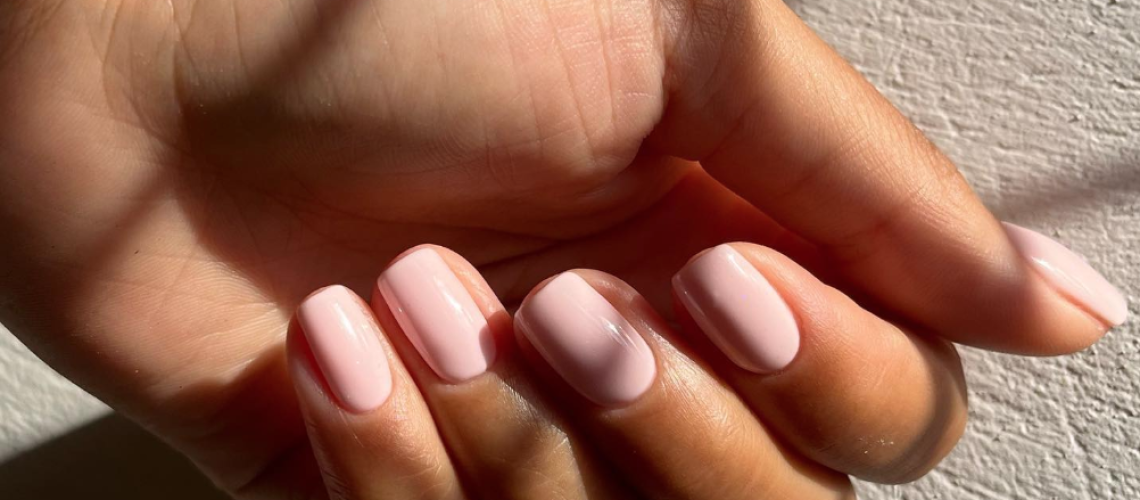Taking care of your nails doesn’t include just your regular cutting and filing them. Nails protect and support the sensitive tips of our fingers and toes. Contrary to some people’s opinion diet is not generally responsible for unusual nail change except if the person suffers from acute malnutrition.
There are numerous causes of nail diseases ranging from injury, infections, etc for fingernails, and trauma, ill-fitting shoes, poor circulation, poor nerve supply, etc for toenails. These nail diseases affect the health, strength and appearance of fingernails and toenails. Toenail problems can affect all age groups, but it’s mostly common among the aged.
Some nail conditions can be treated professionally by either a doctor or a dermatologist while others respond to simple self-help techniques and minor lifestyle changes.

The following are some of the more common nail conditions and how to treat them.
- Beau lines: These are linear lines that run horizontally on the finger or toenails. They move up from the base of the nails as it grows outwards, and are caused by trauma or diseases involving the nail fold.
Treatment:
To treat beau lines, it is advisable to visit your physician to look into possible causes as there are various factors that can bring about beau lines.
- Discolored Nails: Pink is the color of an healthy nail plate. Your nail looks white as it grows off the nail bed. Colors like white, yellow or even green usually indicate problems with your nails and they can result from different conditions and infections of the skin. Some causes of discolored nails include:
- Nicotine from cigarette smoking
- Injury to the nail bed
- Infections
- Nail polish
- Hair coloring agents, etc.
Treatment:
To treat nail discoloration, you can use some home remedy solutions like tea tree oil, baking soda, etc. It is however important to note that these remedies are not always effective and it’s advisable to see your physician if home remedies aren’t helpful in eliminating discoloration.
- Brittle or splitting nails: This is a common nail issue that dermatologists see. It’s a condition that causes horizontal splits within the nail plate and it’s often linked together with onychorrhexis which is a long-wise splitting or ridging of the nail plate. These 2 diseases together are called “brittle nail syndrome”.
Some common causes are:
- Repeatedly wetting and drying your nails,
- Nail cosmetics (hardeners, polish, polish removers, etc), nail procedures
- Exposure to various chemicals like acid, alkalis, cement, solvents, etc.
Although less common, other causes may include iron deficiency or an underlying illness. It is often frequent in women and older individuals.
Treatment:
It can be treated by using moisturizers and keeping the nails protected from chemicals and repeated exposure to water. Although it is considered a cosmetic problem, it’s advisable you see your doctor if the condition becomes bothersome.
- Hangnails: Hangnails are tiny, torn pieces of skin hanging loosely next to nails. They are usually caused by having dry skin or by trauma to the fingers such as nail biting, papercuts, or excessive fingerpicking.
Treatment
Hangnails can be treated at home. The American Academy of Dermatology recommends:
- Washing your hands,
- Clipping the loose piece of skin with a clean nail clipper or scissors.
- Applying over-the-counter antibiotics ointment if the area appears inflamed.
If it becomes persistent, it is recommended you see a physician for evaluation.
- Ingrown toenails: This occurs when the nail grows into the sides of the tissue around the nail. It can cause swelling and pain and in some cases may become infected. Genetics sometimes plays a role in the development of ingrown toenails but other causes like not keeping nails trimmed, physical injury, and wearing tight shoes or socks also contribute to it.
Treatment:
Ingrown toenails can be treated with surgery, soaking the nail in warm water 3 to 4 times each day, keeping the foot dry, wearing comfortable shoes, etc.

- Nail Lifting (Onycholysis): This occurs when the finger or toenails separates painlessly from the nail bed. It forms space under the nail which gathers dirt and debris made of protein in the nails. It occurs slowly over time and results from an underlying injury or health condition like thyroid disease, pregnancy, some forms of infection, and rarely some forms of cancer.
Women are mostly more affected than men, although it can affect people of all age groups.
Treatment:
To treat nail lifting, doctors may prescribe treatment for iron deficiency or oral antifungal treatment. Nail lifting can be prevented by:
- Keeping your nails trimmed
- Use rubber gloves when immersing hands in water for long periods.
- Avoid harsh chemicals.
- Treating underlying conditions.
- Paronychia: This is a skin infection around our fingernails and toenails. It’s usually caused by a bacteria or a type of yeast called candida. There are two types of paronychia, acute and chronic. Acute is short term and it occurs when an infection is due to direct or indirect trauma to the nail fold or cuticle. It’s seen at the side of the nail and it develops along a break in the skin. Chronic paronychia may be a long-term or recurring problem. It occurs in people whose hands are often exposed to moisture. It’s usually the result of irritants or allergens.
Redness, swelling, and yellow or green pus are seen in the skin fold close to the nail plate.
Treatment:
Treatments vary on the cause of paronychia. However, for acute cases, treatment includes:
- Tropical antibiotics
- Warm compresses
- Oral antibiotics
- Surgical incision and drainage in severe cases.
To manage chronic paronychia, a doctor typically treats the underlying cause of the inflammation and this can take several weeks to months.
- Leukonychia spots: This is a condition where white lines or dots appear on your finger or toenails. It’s a common issue and entirely harmless. There are two types of leukonychia spots:
- Apparent leukonychia: this is a problem with the nail bed, and not the nail itself. A nail bed is the portion of the nails that’s under the nail.
- True leukonychia: This comes from the nail matrix, which is the nail part responsible for nail production.
Based on how the nail looks, it can be divided into two categories: Partial leukonychia and Total leukonychia. The latter is the complete whitening of the nail plate, usually affecting all 20 nails while the former occurs when a portion of the nail plate is affected by the whitening. It doesn’t affect all the nails.
Some common causes include;
- Fungi
- Allergic reaction
- Injury to the nail
- Hereditary.
- Mineral deficiency
- Skin conditions, etc.
Treatment:
This depends on the cause of the white spots. Once a diagnosis is made, doctors usually recommends:
- Antifungal medication
- Time and rest
- Avoidance of harsh chemicals and allergens, etc.
It’s good to note that many diseases can affect the nails and treatments often involve preventing further nail damage and treating the underlying condition.








